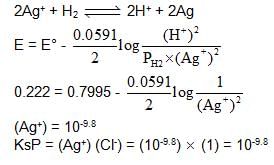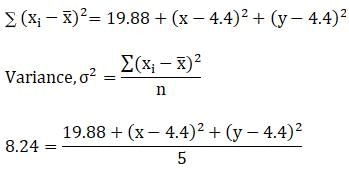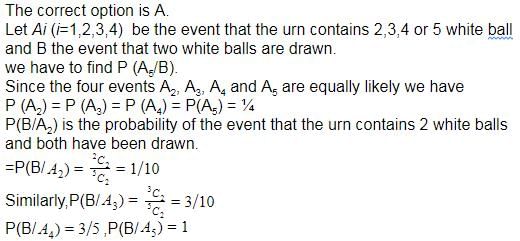Chandigarh TGT Science - Non Medical Mock Test - 7 - SSA Chandigarh MCQ
30 Questions MCQ Test SSA Chandigarh TGT Mock Test Series 2025 - Chandigarh TGT Science - Non Medical Mock Test - 7
In the process scheduling, ______ determines when new processes are admitted to the system.
The size of an organization chart object
Fill in the blanks with the correct modal verb.
We _________ go to the concert if the rain stops. We don't know for sure.
In this questions, a number series is given with one term missing. Choose the correct alternative that will continue the same pattern and fill in the black spaces.
Q. 95, 115.5, 138, (____), 189
Directions: Answer the following question by selecting the most appropriate option.
Learning disabilities may occur due to all of the following except
Vygotsky emphasised the significance of the role played by which of the following factors in the learning of the children?
Directions: Answer the following question by selecting the most appropriate option.
________ is considered a sign of motivated teaching.
IQ scores between 90 and 110 are labelled as:
When a conductor is placed in an external electric field, the acceleration of its electrons will be
The internal resistance of two identical cells, with same current whether joined in series or parallel to a 1Ω resistor is
Radii of curvature of a converging lens are in the ratio 1:2. Its focal length is 6cm and refractive index is 1.5. Then its radii of curvature are
Flow of charges in direction of electrons is called
Which of the following conclusions regarding the structure of atom is based on Rutherford’s α-particle scattering experiment?
Assertion: Metal oxides react with acid to form salt and water.
Reason: Most of the metal oxides are acidic in nature.
Ammonium nitrate can decompose with explosion by the following reaction.
NH4NO3 (s) → N2O (g) + 2H2O ;
ΔH = -37.0 KJ/mol
Calculate the heat produced when 2.50g of NH4NO3 decomposes -
Following cell has EMF 0.7995 V.
Pt | H2 (1 atm) | HNO3 (1M) || AgNO3 (1M) | Ag
If we add enough KCl to the Ag cell so that the final Cl- is 1M. Now the measured emf of the cell is 0.222 V.
The Ksp of AgCl would be :
In the conversion of Br2 to BrO3-, the oxidation number of Br changes from
A photon of 4000  is used to break the iodine molecule, then the % of energy converted to the K.E. of iodine atoms if bond dissociation energy of I2 molecule is 246.5 kJ/mol is:
is used to break the iodine molecule, then the % of energy converted to the K.E. of iodine atoms if bond dissociation energy of I2 molecule is 246.5 kJ/mol is:
A student can solve 70% problems of a book and second student solve 50% problem of same book. Find the probability that at least one of them will solve a selected problem from this book.
The domain and range of the function f: R → R defined by: f = {(x+1, x+5): x ∈ {0, 1, 2, 3, 4, 5}}
If the vector equation of a line is find its caryesian equation.
The mean of 5 observations is 4.4 and their variance is 8.24. If three observations are 1,2 and 6, the other two observations are
An urn contains five balls. Two balls are drawn and found to be white. The probability that all the balls are white is:
If A = {2, 4, 6, 8} and U = {1, 2, 3, 4, 5, 6, 7, 8, 9,}, then A’=
|
3 docs|30 tests
|




























